Cost to Build a Retaining Wall in 2025
Retaining walls often serve a very important role in preventing soil erosion and maintaining the grade of a landscape. They often hold the land back, preventing it from sliding. Retaining walls can be as beautiful as they are functional and can be the focal point of a landscape.
They can even be combined with other landscaping features, such as patios, providing borders, and in some cases, even seating. You might be wondering how much a retaining wall might cost. We'll cover the most popular types and the average price of each in detail below.
2025 Retaining Wall Costs
Calculate local project costs by entering your zip code.
Custom Location
| National Average Price | $6,500 |
| Typical Price Range | $4,500 - $9,500 |
| Typical Price Range (per square foot) | $15 - $40 |
Get free estimates from contractors near you.
On this page:
How Much Does a Retaining Wall Cost?
Many different materials can be used to blend with any design, and the cost of a retaining wall can vary.
A new retaining wall usually costs $4,500 – $9,500. There are several factors that affect the price of a wall, mainly labor and materials needed for the project, as well as length, height, and whether or not drainage is included in the design.
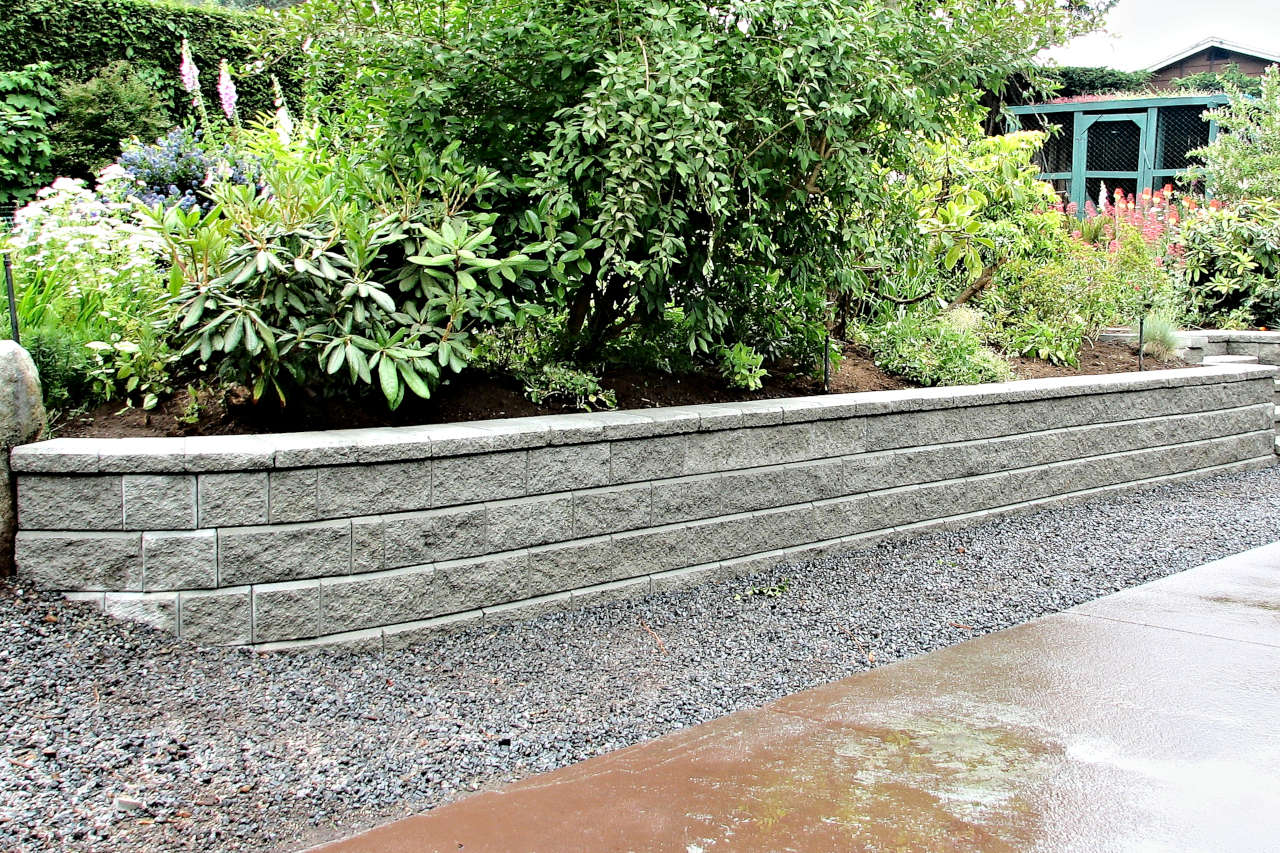
Retaining Wall Labor Costs
Labor is a significant cost for any construction project, and that cost will vary depending on the size, scale, and complexity of the landscaping project. Labor to construct a retaining wall often ranges between $50 – $75 per hour or $15 to $40 a square foot, but the amount of labor needed will need to be estimated by a professional.
Consider requesting a professional retaining wall estimate to get an accurate labor cost. You may be able to complete the project yourself as well, minimizing labor costs.
Retaining Wall Material Costs
Retaining wall material can range in price from $10 – $35 per square foot installed, with some material options including cinder block, wood, interlocking concrete block, natural stone, or poured concrete.
Cinder Block
Cinder block is a cost-effective material for a retaining wall and usually runs between $10 – $12 per square foot installed.[1] Cinder block is often not the most desirable choice for a retaining wall since it is not structurally designed for lateral support and to hold the land back, but may be used for short retaining walls.
Cinder blocks can be plastered or painted to improve the cosmetic appearance. Check out our concrete block calculator to estimate how many cinder blocks you will need for your wall.
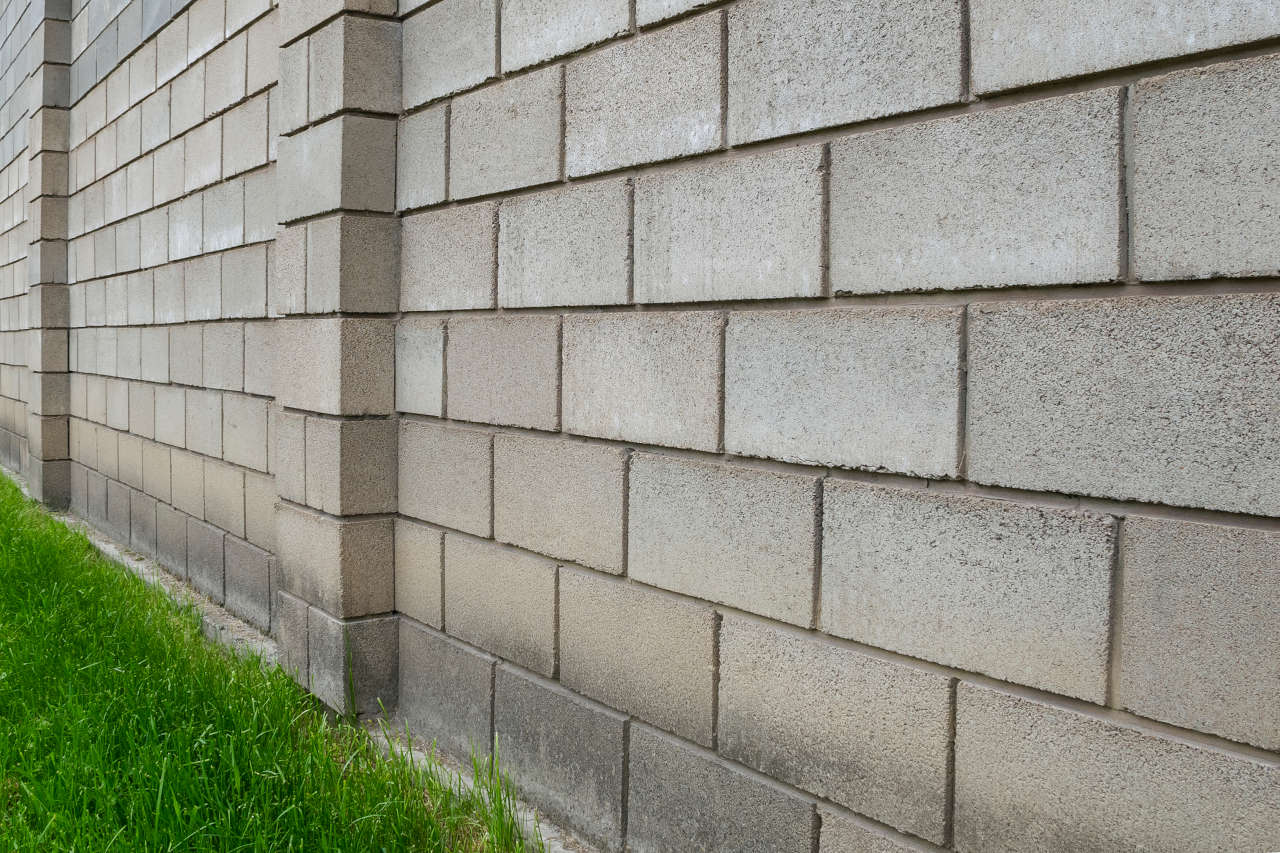
Wood Timbers
Wood timbers are a great material for retaining walls since they are beautiful and strong. Wood timbers often cost $10 – $15 per square foot installed. Wood walls often last many years, however, they do tend to rot and degrade over time and will eventually need to be replaced.
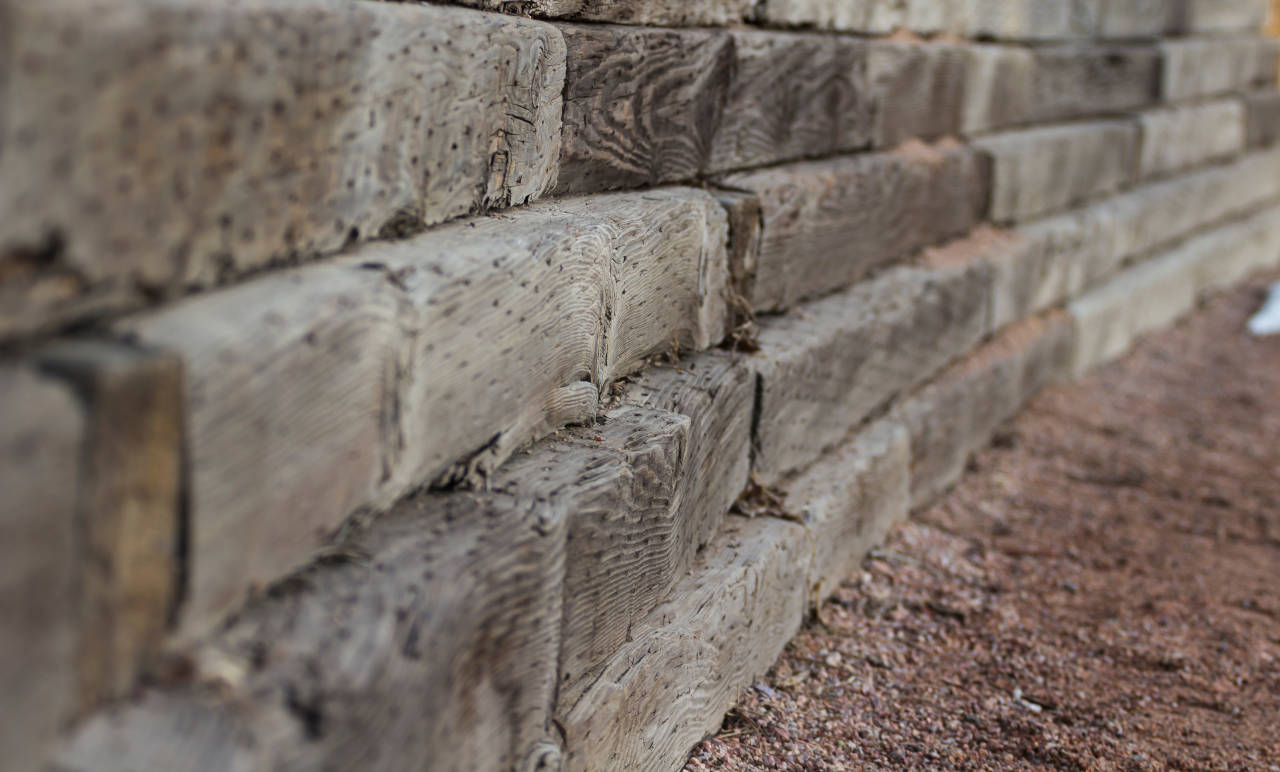
Interlocking Concrete Block
Interlocking concrete blocks are beautiful and designed and structured specifically for use in retaining walls. Block walls usually cost $12 – $20 per square foot, which can vary depending on the type of block used. Concrete block walls can last a lifetime when installed correctly and add beauty to almost any landscape. Estimate how many blocks you need for your retaining wall.
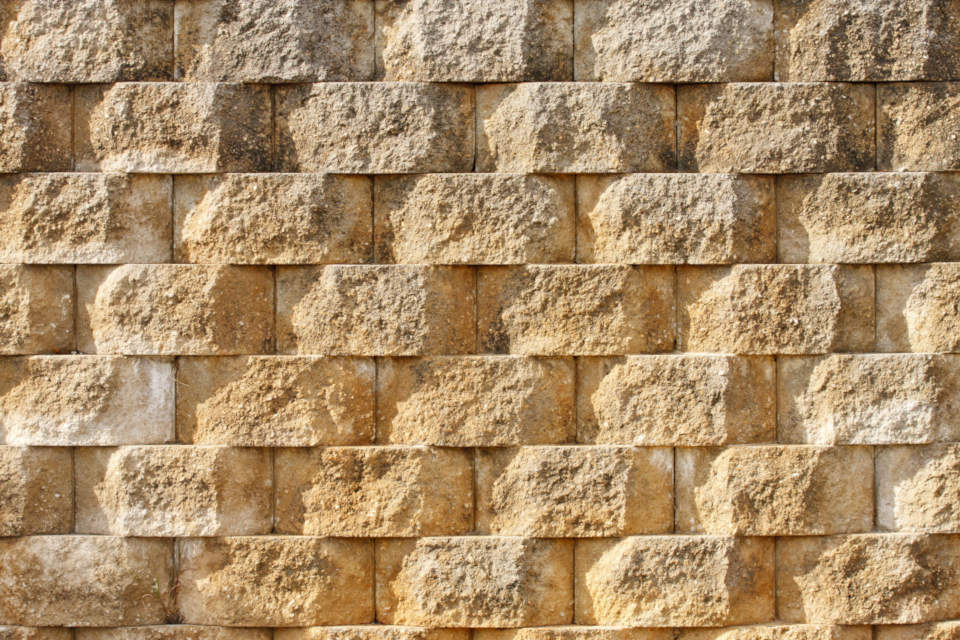
Natural Stone
Natural stone retaining walls are very attractive, and stones can range in size from a few inches to several feet. Natural stone usually costs $20 – $35 per square foot. The cost is often more than concrete blocks due to the additional installation complexity.
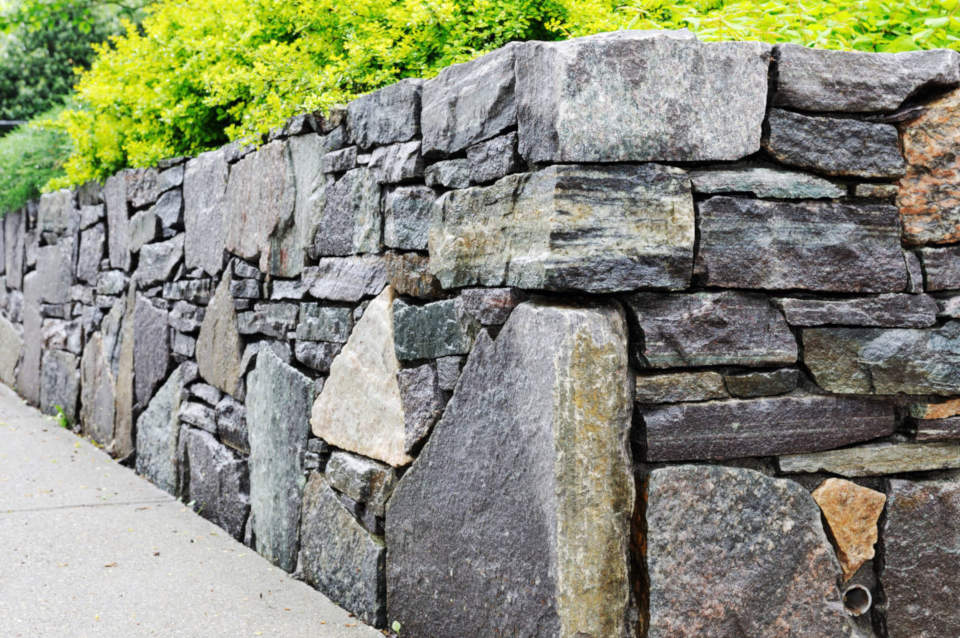
Poured Concrete
Poured concrete has become more popular for use in retaining walls as color and patterns have become more commonly used, making them look much better than a plain concrete wall. Poured concrete is often an inexpensive choice for a wall at about $16 – $20 per square foot, but is also extremely durable. When installed correctly, a poured concrete wall will last a very long time with virtually no maintenance.
The downside is that it isn’t as attractive as other materials; painting or giving it a veneer can help, but also raises costs.
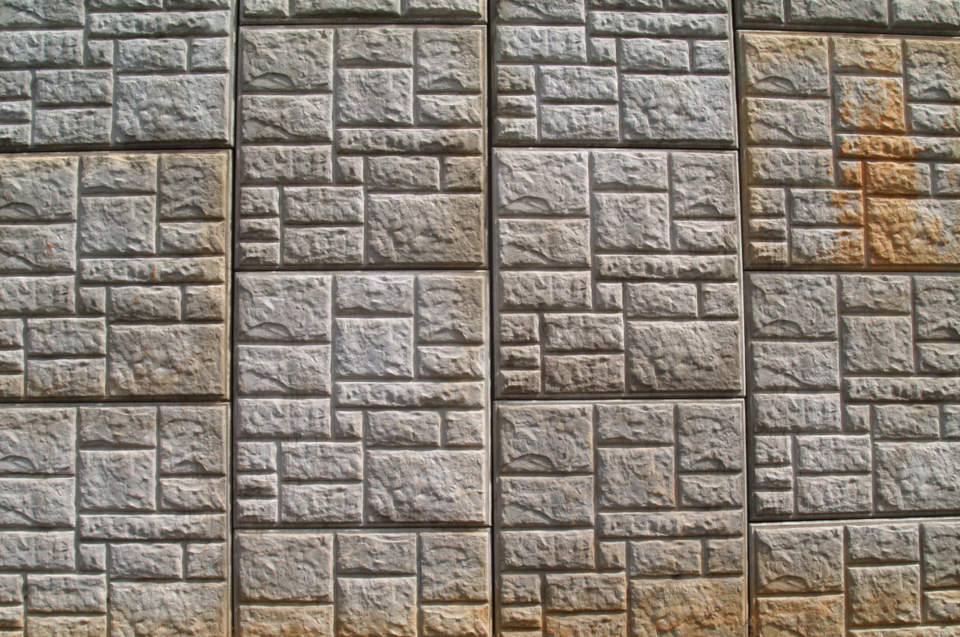
Other Retaining Wall Materials
People often overlook some additional materials needed to install any retaining wall. A proper wall installation often starts with a solid base, sometimes gravel, sand, or concrete. Walls also need a way to drain excess water from behind the wall, which requires gravel, backing, and drain materials. After the wall is constructed, fill material will be needed for behind the wall, but often this is available on site. Consider the cost of these extra materials when estimating the cost of your wall project.
There are also other types of retaining walls, from rammed earth to large block cribs. Some retaining walls may be more functional than aesthetically pleasing, while some may have to have cantilever supports behind them, which can increase costs.
Other Cost Factors
Other factors can affect the cost of a retaining wall. One common factor is the amount of excavation needed for the project and the material that needs to be excavated. Removing rock and boulders will be more labor intensive than removing dirt, for example. The height of a wall can also affect the cost.
Higher walls need to have a stronger base, more drainage, more excavation, and often require more planning and engineering. Adding steps to a wall can also add to the cost, so consider that when estimating your project. Every property is different, so always consider getting professional estimates for a more accurate cost assessment of your retaining wall.
Keep in mind that in some municipalities, permits are necessary for building a retaining wall. The cost of a permit ranges from $50 to $450, depending on the type, area, and function of the wall.
Frequently Asked Questions
What is the most affordable retaining wall to build?
This really depends on the type – not the style or material of the retaining wall. However, if you’re looking for something functional and attractive, poured concrete is generally the most affordable method.
What is the lifespan of a retaining wall?
This will vary by the material, how it was installed, and whether it has drainage. The average lifespan can be 40 to 100 years, with wood lasting the least and stone having the longest lifespan.
Do you need planning permission to install a retaining wall?
In most cases, yes. In addition, you will need a permit, which can cost between $50 and $450 to complete the project.
All pricing information on this page is based on average industry costs, and is subject to variance for project-specific materials, labor rates, and requirements.
Similar Home Improvement Calculators
References
- John D. Wagner, Engineering a Retaining Wall, This Old House, https://www.thisoldhouse.com/yards/21015197/engineering-a-retaining-wall


